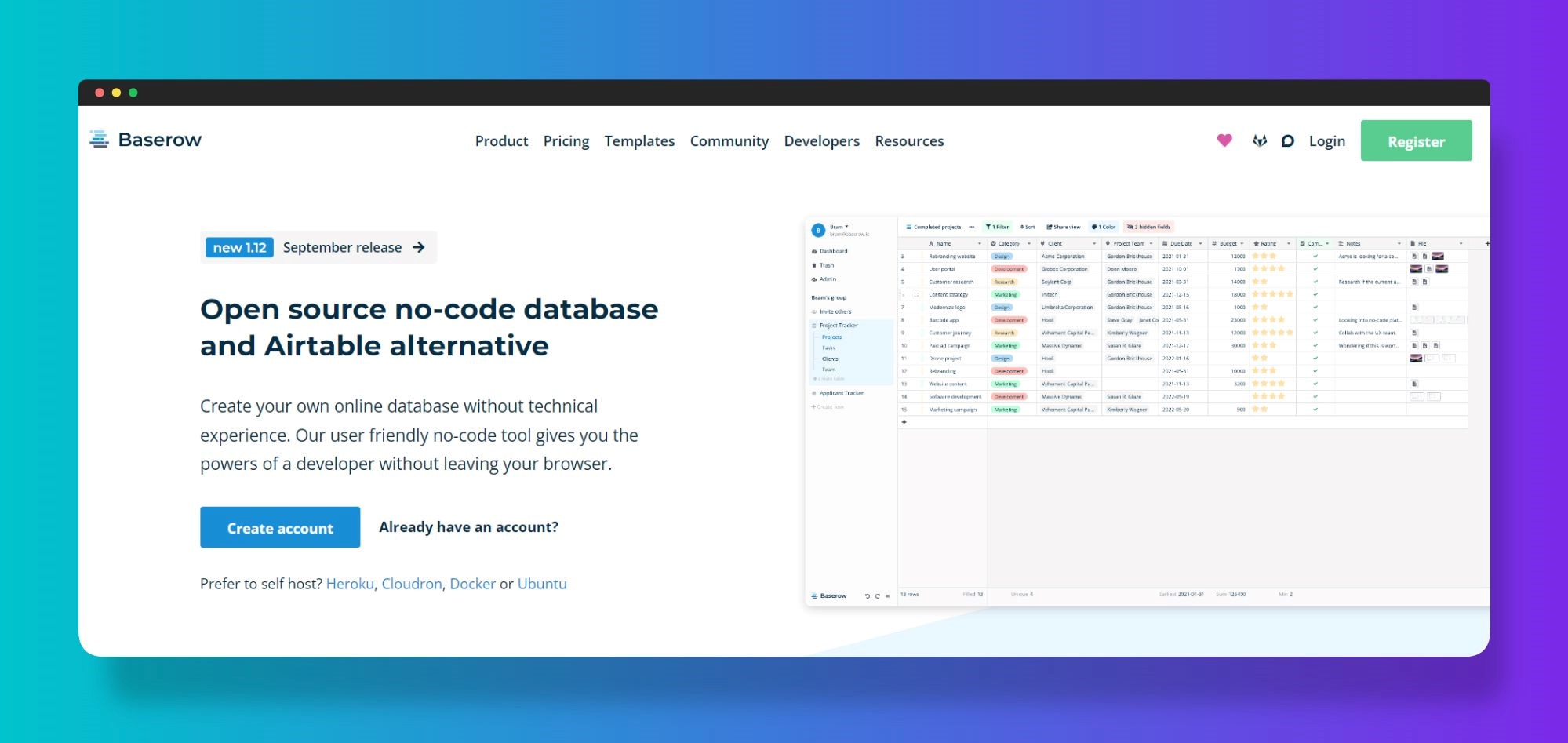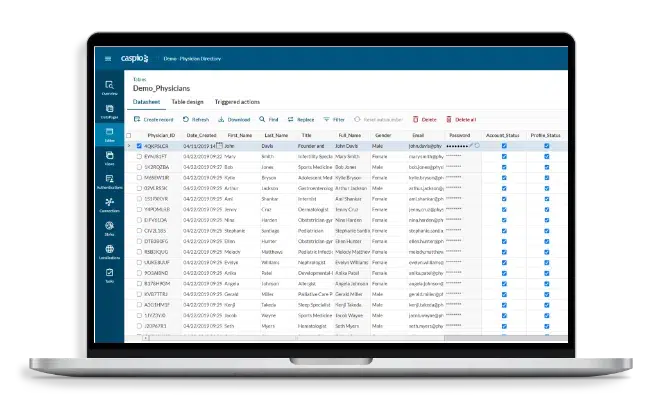No-Code Open System Database Production: Empowering Companies to Build Faster
No-Code Open System Database Production: Empowering Companies to Build Faster
Blog Article
Discover Exactly How Scalable Data Sources Can Be Used Without Coding to Boost Your Organization Procedures
In today's hectic organization environment, the capacity to handle and examine information efficiently is extremely important. Scalable databases, specifically when coupled with no-code solutions, supply a transformative method that encourages non-technical users to improve procedures. By utilizing devices that require no coding expertise, organizations can improve their functional abilities while decreasing dependence on IT resources. The genuine question lies in understanding exactly how these options can be customized to details company requirements and what prospective difficulties might develop in their implementation. Discovering these facets can brighten the course to functional quality.
Understanding Scalable Databases
Scalable data sources are important for contemporary service operations, enabling companies to successfully manage enhancing volumes of information without compromising efficiency. These data sources are designed to grow and adapt to the changing demands of an organization, ensuring that they can manage larger datasets and more complex inquiries as business demands evolve.
Recognizing scalable databases involves acknowledging their 2 main kinds: vertical scaling and straight scaling. Upright scaling, or "scaling up," includes including even more power (CPU, RAM) to an existing web server to boost efficiency. Conversely, horizontal scaling, or "scaling out," entails adding much more servers to disperse the tons, which usually causes better adaptability and fault tolerance.
One more vital element is the design of scalable databases, which can be either non-relational or relational. Relational data sources, such as MySQL and PostgreSQL, are structured and make use of SQL for questions, while non-relational data sources, like MongoDB and Cassandra, offer more flexibility with disorganized information.
Inevitably, recognizing scalable data sources is crucial for companies intending to utilize information as a calculated property, enabling them to remain affordable in an increasingly data-driven setting.

Benefits of No-Code Solutions
Opening the capacity of no-code remedies empowers companies to enhance operations and improve performance without the need for comprehensive shows expertise. These systems allow non-technical individuals to develop, change, and manage databases effortlessly, therefore democratizing access to modern technology throughout teams.
One of the key benefits of no-code services is their speed of application. Organizations can rapidly deploy applications and automate processes, dramatically reducing the time invested in advancement cycles. This dexterity makes it possible for companies to react promptly to market changes and customer demands, fostering a competitive edge.
Additionally, no-code platforms reduce reliance on IT departments for daily tasks, allowing technical groups to concentrate on even more intricate jobs that need specialized skills. This shift not just enhances resource allocation but also advertises technology within the organization.
Cost-effectiveness is another advantage, as no-code solutions can lower growth and upkeep costs. By minimizing the demand for coding expertise, business can harness the capabilities of their existing workforce without the overhead of working with added workers.
Popular No-Code Database Devices
The increase of no-code services has actually brought about the emergence of numerous data source devices that deal with companies looking for performance and availability. These tools equip individuals with limited technological experience to produce, manage, and manipulate databases seamlessly.

Caspio stands apart for its capacity to construct web applications with no coding. It allows businesses to develop robust databases and deploy applications promptly, providing to different industry demands. Flair provides user-friendly interfaces and powerful data monitoring abilities, enabling organizations to build custom-made applications tailored to their process.

Usage Instances in Service Operations
Exactly how can businesses take advantage of data source devices to enhance their procedures? Scalable databases offer organizations with effective abilities to handle and evaluate data without the need for extensive coding expertise. These devices can improve numerous business procedures, eventually causing improved efficiency and performance.
One famous use instance is consumer connection management (CRM) Services can make use of scalable data sources to track client interactions, preferences, and responses, allowing customized communication and far better solution. By centralizing this information, groups can collaborate better and reply to consumer requirements in real-time.
An additional significant application is inventory management. Firms can use no-code database devices to check stock degrees, track shipments, and forecast need. This guarantees optimum supply levels, minimizes waste, and minimizes stockouts.
In addition, project administration can gain from scalable data sources by allowing groups to handle tasks, due dates, and resources in a combined platform. With real-time updates and data visualization, task supervisors can make educated choices.
Getting Began With Implementation
Carrying out scalable data sources in company operations calls for a structured technique to make certain successful integration and use. The initial step is to carry out an extensive demands analysis, identifying particular company needs, information types, and expected growth patterns. This foundational understanding will assist the choice of the ideal data source solution.
Next, choose an user-friendly, no-code database system that aligns with your functional objectives. no-code. go to this website Numerous contemporary solutions offer user-friendly user interfaces, permitting non-technical individuals to manage information properly. After selecting a system, establish a clear information design that lays out how information will certainly be organized, accessed, and kept
Training is important; guarantee that employee are furnished with the needed skills to use the data source. Think about offering workshops or tutorials to familiarize staff with the system's capabilities.
Verdict
In final thought, the combination of scalable databases via no-code options provides significant benefits for business operations. These platforms encourage non-technical individuals to efficiently manage and assess data, helping with improved decision-making and cooperation. By embracing tools such as Airtable and Idea, companies can streamline procedures and lower reliance on IT resources. Eventually, leveraging these innovations can cause enhanced performance and operational performance, positioning organizations for continual growth in a competitive landscape.
One prominent no-code data source tool is Airtable, which integrates the performance of a spreadsheet with the power of a database.Exactly how can businesses take advantage of data source tools to enhance their procedures? Businesses can use scalable data sources to track customer interactions, choices, and responses, allowing tailored communication and much better solution.Carrying out scalable data sources in organization operations needs an web organized strategy to ensure successful combination and application.In final thought, the assimilation of scalable data sources through no-code solutions presents considerable benefits for service procedures.
Report this page